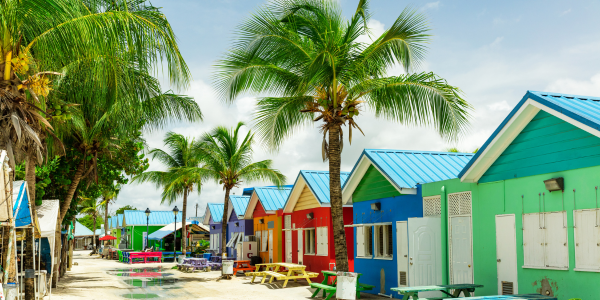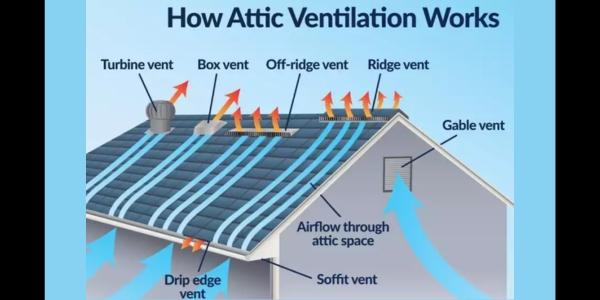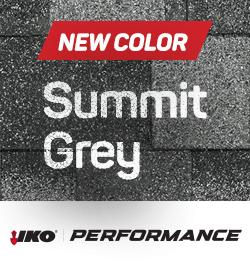5 tips to help your roof beat the heat

By Royalty Companies.
Protect your roof from humidity’s hidden risks.
While tropical breezes and beautiful sunshine are a plus for living in warmer regions, the humidity levels can be intense. Humid climates can damage your roof over time. In the summertime high humidity can be stifling and your roof needs protection from the harsh environment. The first preventative measure is to understand how humidity impacts your roof and take care to learn what materials are essential to creating a long-lasting roof. Royalty Companies has shared the five most important facts to prepare your roof for humidity.
1 - Moisture buildup and algae growth
One of the most common issues homeowners face in humid climates is the growth of algae, mold and mildew on their roofs due to moisture buildup. Humidity creates the perfect environment for these organisms to thrive, especially in shaded or damp areas. Over time, algae can stain your roof, making it appear dirty and worn, while mold and mildew can eat away at roofing materials, leading to early deterioration.
Prevention tips:
- Choose roofing materials that are resistant to algae, such as algae-resistant shingles.
- Schedule regular cleanings or treatments to remove mold and algae before they spread.
- Consider installing zinc or copper strips along your roof to prevent growth.
2 - Roof rot and wood damage
Excess moisture caused by constant humidity can seep into roofing materials, especially in areas with poor ventilation. Wooden components of your roof, such as decking and trusses, are particularly vulnerable to rot when exposed to prolonged dampness. Over time, this can weaken your roof’s structural integrity, leading to costly repairs or replacements.
Prevention tips:
- Ensure your roof has proper ventilation to allow moisture to escape.
- Regularly inspect and maintain your roof, especially after heavy rainstorms.
- Use treated wood and moisture-resistant materials for your roof’s underlayment.
3 - Shingle deterioration
Asphalt shingles are a popular roofing choice, but the high levels of humidity can cause them to deteriorate more quickly. Moisture can penetrate the shingles, causing them to warp, crack or lose their granules. This not only reduces your roof’s lifespan but also makes it less effective at protecting your home from the elements.
Prevention tips:
- Inspect your roof annually and after storms for any signs of shingle damage.
- Opt for high-quality, moisture-resistant shingles that are specifically designed for humid climates.
- Make sure your attic is properly ventilated to reduce the buildup of heat and moisture that can speed up deterioration.
4 - Corrosion of metal components
Humidity can also cause metal components of your roof, such as flashing, nails and gutters, to corrode over time. When these components weaken, they can compromise the overall structure of your roof, leading to leaks and other issues. Coastal areas are particularly vulnerable to corrosion due to the combination of humidity and salt air.
Prevention tips:
- Use corrosion-resistant materials like stainless steel or galvanized metal for roofing components.
- Regularly inspect metal flashing and gutters for signs of rust or corrosion and replace them as needed.
5. Condensation and insulation issues
High humidity levels can also lead to condensation problems in your attic or under your roof. When warm, humid air enters your attic and meets cooler surfaces, it can form condensation. Over time, this can lead to moisture buildup, compromising insulation and increasing the risk of mold growth inside your home.
Prevention tips:
- Ensure your attic has proper insulation to prevent warm air from entering.
- Install moisture barriers in your attic to prevent condensation from forming.
- Make sure your attic has enough ventilation to allow humid air to escape.
Humid climates pose several challenges for homeowners, but regular maintenance and proper roofing materials can help combat the effects of moisture. Investing in algae-resistant shingles, moisture-resistant underlayment and corrosion-resistant metal components can extend the life of your roof. Don’t forget to schedule routine inspections, especially after storms, to catch potential issues before they become serious.
By understanding how humidity affects your roof, you can take the necessary steps to protect your home and avoid costly repairs down the line.
Original article source: Royalty Companies
Have a question? AskARoofer.
Find your local roofing contractor in the RoofersCoffeeShop® Contractor Directory.









Comments
Leave a Reply
Have an account? Login to leave a comment!
Sign In